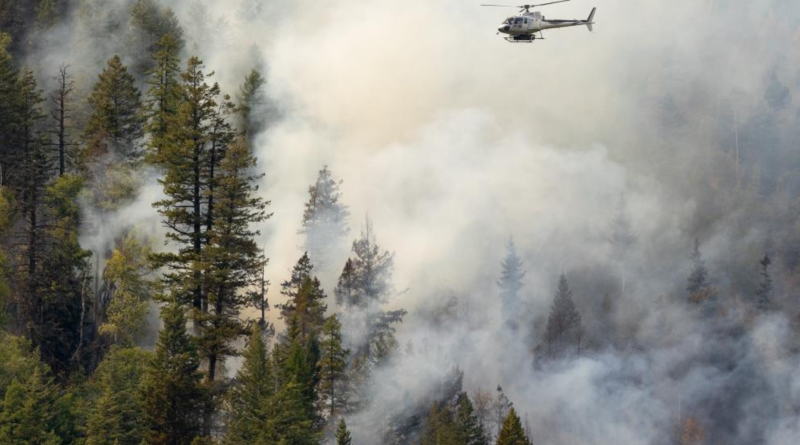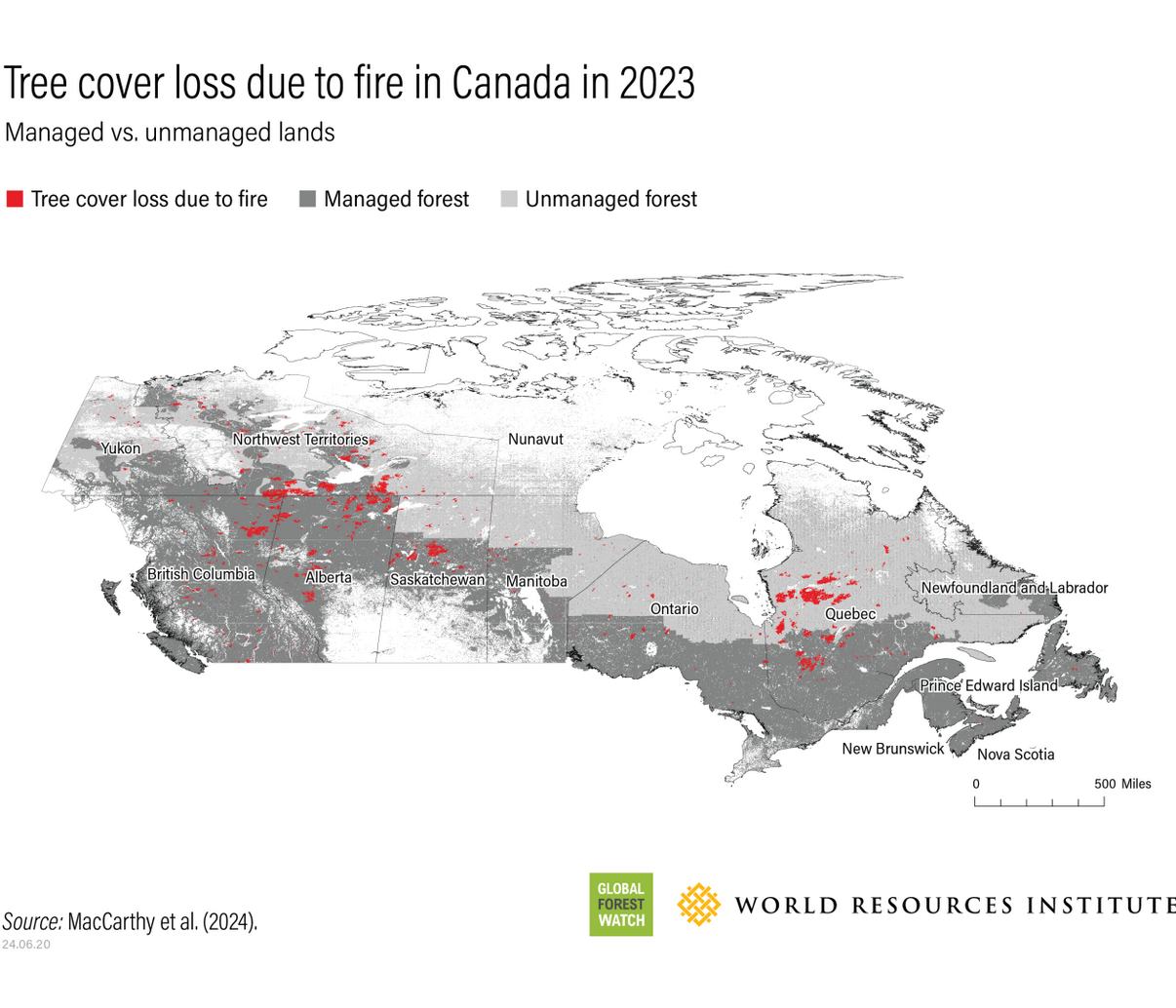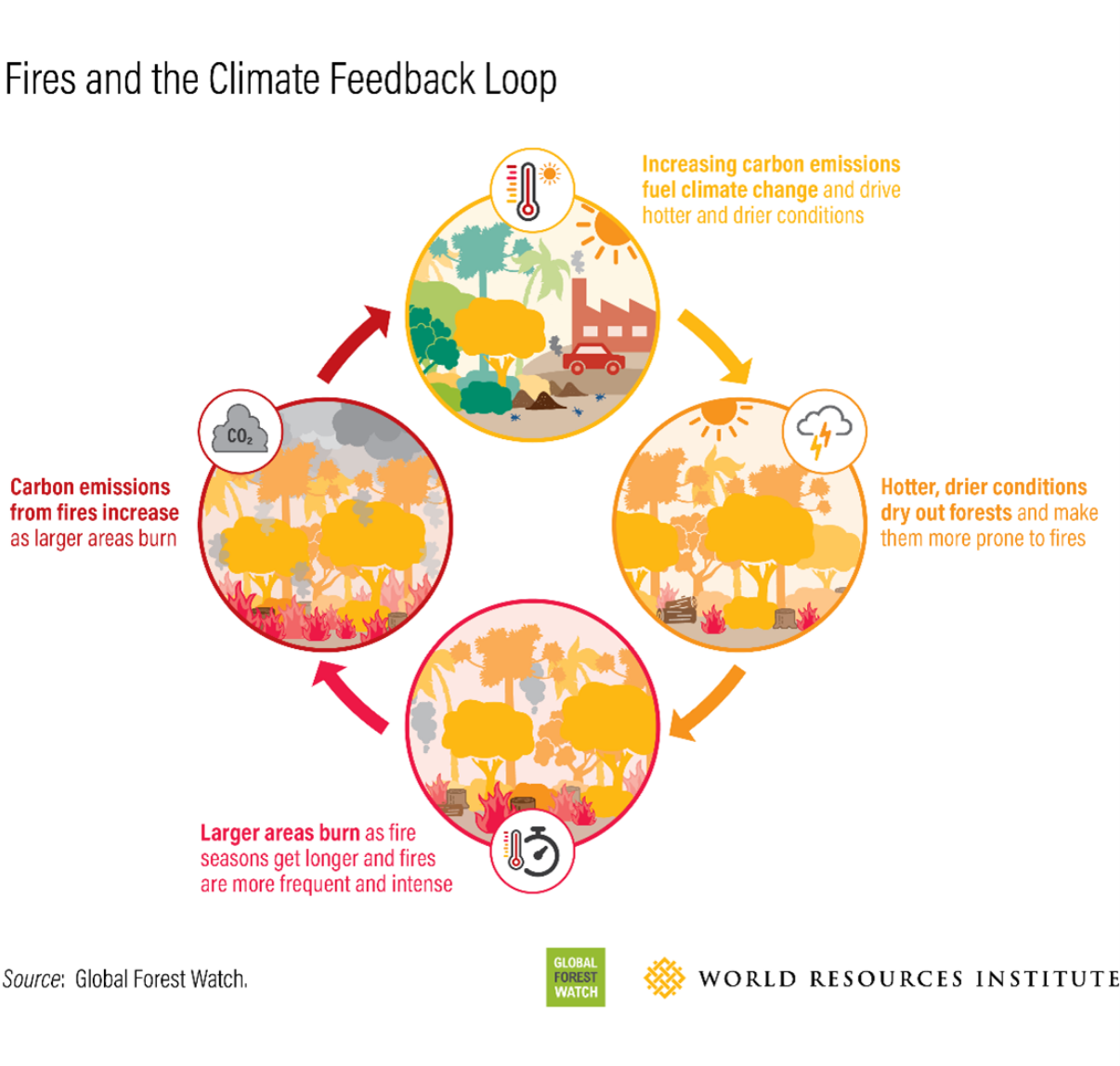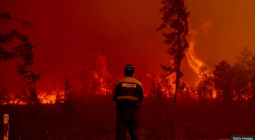Canada's Record-breaking 2023 Wildfires Released Nearly 4 Times More Carbon than Global Aviation

Canada’s 2023 wildfires made international headlines, causing billions of dollars in property damage, displacing thousands of people from their homes, and spewing air pollution that traveled as far as Europe and China. A new analysis shows that the wildfires also had a massive effect on greenhouse gas emissions.
Researchers from WRI’s Global Forest Watch initiative and the University of Maryland find that wildfires burned roughly 7.8 million hectares of forests in Canada in 2023 — more than 6 times the annual average since 2001. This amount of tree cover loss produced roughly 3 billion tons of carbon dioxide — nearly 4 times the carbon emissions of the global aviation sector in 2022, and 25% more than from all tropical primary forest loss combined in 2023.
Unlike emissions from tropical deforestation, which involve a permanent change in land use, most of the carbon emitted from wildfires will eventually be recovered by Canada’s forests over time as they regrow. However, it will take these forests decades to re-absorb all the carbon dioxide that was emitted in just a single year; meanwhile, time is in short supply to prevent irreversible damage from climate change.

While 2023 wildfires were exceptionally bad, they are part of a growing trend of forest fires becoming more frequent and severe. And yet due to Canada’s emissions accounting methods, most of the country’s wildfire-related emissions will not be officially reported in the UN’s global inventory, despite their substantial contribution to climate change.
Climate Change Is Fueling Wildfires in Canada
The 2023 wildfires in Canada accounted for more than a quarter of all tree cover loss globally that year and were largely driven by unusually hot temperatures and low precipitation. Québec, Northwest Territories, Alberta and British Columbia all experienced record high tree cover loss due to fires in 2023.
Though forest fires in Canada and other northern boreal forests are a common and natural occurrence, drier, hotter conditions caused by climate change are leading to fires that are larger and more frequent than in past decades. One study estimates that the annual area burned in Canada increased more than 30,000 hectares per year between 1959 and 2015. Another recent analysis from WRI shows that globally, forest fires are burning nearly twice as much tree cover today as they did 20 years ago.
This trend is likely driven by the fact that in parts of Canada and other northern latitudes, land surface temperatures are warming at rates roughly double the global average. Higher temperatures caused by climate change dry out the landscape and make forests more susceptible to fire, driving longer fire seasons and larger forest fires. As larger forested areas burn, more carbon is emitted into the atmosphere, further exacerbating climate change and contributing to even more fires as part of a fires-climate feedback loop.

With climate change expected to increase annual burned area by 30-50% globally by the end of the century, wildfires will become an increasingly large source of carbon emissions, further exacerbating climate change. Correctly accounting for them in global emissions inventories is essential for accurately assessing atmospheric emissions and progress towards climate goals, such as the international target to limit global temperature rise to 1.5 degrees C (2.7 degrees F) above pre-industrial levels.
Emissions from Canada’s Wildfires Are Largely Excluded from its GHG Inventory
There is currently a large gap between emissions reported by countries and what is measured directly in the atmosphere. And, while this is largely by design to target anthropogenic sources and many of the differences between GHG inventories and global atmospheric models have largely been explained and reconciled, the build-up of GHGs in the atmosphere still does not match the cumulative impact of national reporting.
Part of the reason is that the UN only requires countries to document emissions that are anthropogenic, or human-caused, to track progress against the world’s goal of limiting global temperature rise to 1.5 degrees C (2.7 degrees F) above pre-industrial levels. Because it is difficult to assess which emissions and removals are caused by land management and land use changes, the Intergovernmental Panel on Climate Change (IPCC) methodology used for estimating GHG emissions allows countries to designate portions of their lands as “managed” (areas where human interventions have been applied for production, ecological or social functions) and “unmanaged” (areas where no human activity is present) to better differentiate between anthropogenic and natural sources of GHGs.
The problem is that there’s a lot of ambiguity around the definition of what counts as managed land and whether natural disturbances in managed lands count as anthropogenic emissions.
Because managed lands are more likely to be influenced by human activity, countries agreed to focus their GHG reporting there. But they did not agree on a definition for what constitutes managed land, or how to report GHG emissions and removals from natural disturbances in those areas. Therefore, countries are free to interpret the definition in a wide variety of ways.
Canada is unique from many other countries in that it excludes all wildfire-related emissions and removals in its “managed” lands from official reporting to focus more directly on anthropogenic sources of emissions, like timber harvesting. However, the UN and others have questioned this approach. During a technical review of the inventory Canada submitted in 2021, reviewers noted that Canada did not provide enough information to justify their assumption that all emissions and removals from stand-replacing fires in managed forests are non-anthropogenic. Furthermore, one recent study found that excluding wildfire emissions in managed forests in Canada may underestimate GHG emissions in the country by 80 million tons per year.
Accounting for the Full Impact of Wildfires
The reality is that the lines between “natural” and “anthropogenic” wildfires are blurring. Research shows that roughly half of all fires in Canada are directly started by people and, on average, they account for about 20% of the area burned each year. Furthermore, human-driven climate change is making fire seasons longer, resulting in larger and more frequent wildfires. By excluding all emissions and removals in managed forests affected by natural disturbances, Canada’s national GHG inventory may be underestimating land-based carbon emissions.
The full impact of Canada’s record-breaking wildfire season reveals a lesson for all countries: Fighting forest fires — and accurately accounting for their emissions — are critical measures for overcoming the world’s growing climate crisis.





